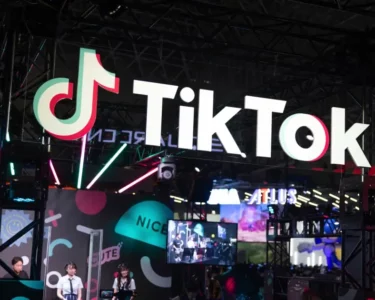A momentous development in the shipping industry has set sail on its inaugural voyage. A cargo ship equipped with ingenious, oversized wind-powered sails of British design has embarked on a journey that holds the promise of steering the maritime domain toward a more environmentally conscious trajectory. The forward-thinking shipping company, Cargill, has chartered this vessel, hoping that the implementation of this cutting-edge technology will catalyze a shift toward a greener future for the industry as a whole.
At the heart of this revolutionary endeavor are the colossal, wing-sized WindWings sails, carefully constructed to mimic the durability of wind turbines. These sails, towering at a height of 123 feet (37.5 meters), are ingeniously engineered to be folded down while the ship is in port and unfurled when the vessel sets sail. By harnessing the power of the wind, the ship can leverage a hybrid propulsion system that significantly reduces its reliance on traditional engines. This breakthrough technology is poised to make a considerable dent in the industry’s carbon footprint by substantially curbing fuel consumption.
The environmental concerns associated with the shipping industry are substantial, with estimates attributing approximately 2.1% of global carbon dioxide (CO2) emissions to its operations. Therefore, any advancement capable of mitigating this environmental impact holds considerable significance. The maiden voyage of the Pyxis Ocean, from China to Brazil, serves as a pivotal real-world test of the efficacy of wind-wing technology.
Jan Dieleman, the president of Cargill Ocean Transportation, underscores the industry’s journey toward decarbonization. Acknowledging that there isn’t a one-size-fits-all solution, he emphasizes that the adoption of such innovations reflects the industry’s evolving mindset. Only a few years ago, discussions around decarbonization were met with skepticism, but today, the narrative has shifted, and the imperative to contribute to a greener future is universally acknowledged.
The wind-wing technology was developed by BAR Technologies, a UK-based firm that emerged from Sir Ben Ainslie’s 2017 America’s Cup team. This innovation, born from an arena often referred to as the “Formula One of the Seas,” demonstrates the convergence of cutting-edge technology and environmental stewardship. John Cooper, head of BAR Technologies and a former member of a Formula One team, stresses the transformative potential of this technology. He predicts that by 2025, half of all newly constructed ships will integrate wind propulsion, citing remarkable fuel and emissions savings.
While the genesis of this innovation lies in the UK, the manufacturing of the sails takes place in China due to cost-related challenges in the UK. The endeavor is a testament to the global nature of environmental and technological collaboration.
Experts in the field acknowledge the immense promise of wind power in revolutionizing the shipping industry’s sustainability efforts. As the sector aims to address its yearly production of an estimated 837 million tonnes of CO2, wind propulsion emerges as a compelling avenue. Dr. Simon Bullock, a shipping researcher, highlights the urgency of optimizing operational measures in the absence of immediate access to zero-carbon fuels. Solutions like retrofitting ships with innovative technologies such as sails, kites, and rotors, along with the implementation of slower speeds, constitute vital interim strategies.
The adoption of wind-related technologies in the shipping industry has indeed gained momentum. Despite a relatively modest starting point, the number of ships integrating wind-assisted technology has doubled over the past year. This trajectory is poised to gain further momentum as the sector grapples with the multifaceted challenge of decarbonization. While the path forward remains complex and multifarious, stakeholders are optimistic about the potential for wind technology to usher in a more sustainable era for maritime transport.
the inaugural voyage of the Pyxis Ocean equipped with WindWings sails is a watershed moment in the maritime industry’s journey toward sustainability. This remarkable fusion of cutting-edge technology and environmental consciousness underscores the paradigm shift occurring within the shipping sector. As the industry navigates the intricate waters of decarbonization, wind power emerges as a beacon of hope, promising substantial reductions in emissions and fuel consumption. While challenges remain, the ship sets sail with the winds of change at its back, propelling the industry toward a greener and more promising future.





